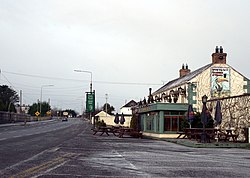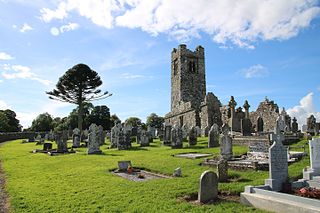
Slane is a village in County Meath, in Ireland. The village stands on a steep hillside on the left bank of the River Boyne at the intersection of the N2 and the N51. As of the 2022 census, Slane's population was 1,445. The village and surrounding area contains many historic sites dating back over 5,000 years. The village centre, as it is laid-out today, dates mainly from the 18th century.
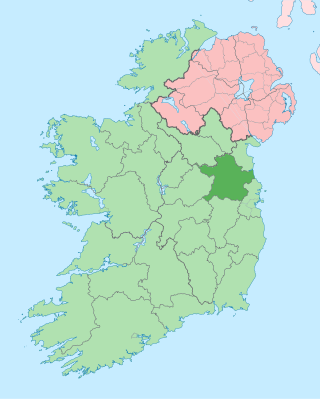
County Meath is a county in the Eastern and Midland Region of Ireland, within the province of Leinster. It is bordered by County Dublin to the southeast, Louth to the northeast, Kildare to the south, Offaly to the southwest, Westmeath to the west, Cavan to the northwest, and Monaghan to the north. To the east, Meath also borders the Irish Sea along a narrow strip between the rivers Boyne and Delvin, giving it the second shortest coastline of any county. Meath County Council is the local authority for the county.

Trim is a town in County Meath, Ireland. It is situated on the River Boyne and, as of the 2022 census, had a population of 9,563. The town is noted for Trim Castle – the largest Norman castle in Ireland. One of the two cathedrals of the United Dioceses of Meath and Kildare – St Patrick's cathedral – is located north of the river. Trim won the Irish Tidy Towns Competition in 1972, 1984, 2014 and 2022, and was the joint winner with Ballyconnell in 1974. Trim was historically the county town of Meath, but this title was passed on in 1898 to the larger, neighbouring town of Navan.

Kells is a town in County Meath, Ireland. The town lies off the M3 motorway, 16 km (10 mi) from Navan and 65 km (40 mi) from Dublin. Along with other towns in County Meath, it is within the commuter belt for Dublin, and had a population of 6,608 as of the 2022 census. It is best known as the site of Kells Abbey, from which the Book of Kells takes its name.

Kilbeggan is a town in County Westmeath, Ireland. It is in the barony of Moycashel.

Kinnegad or Kinagad is a town in County Westmeath, Ireland. It is on the border with County Meath, near the junction of the M6 and the M4 motorways - two of Ireland's main east–west roads. It is roughly 60 km from the capital, Dublin.
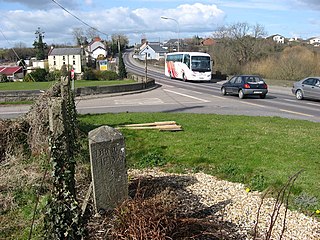
Julianstown is a village in County Meath, Ireland. It is located near Drogheda on the R132 regional road. In 1641, the Battle of Julianstown was fought here during the Irish Rebellion of 1641.
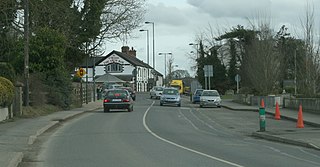
Dunshaughlin is a town in County Meath, Ireland. A commuter town for nearby Dublin, Dunshaughlin more than tripled in population between the 1996 and 2022 censuses.
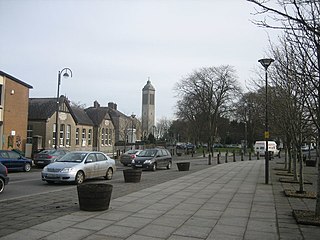
Dunboyne is a town in Meath, Ireland, 15 km north-west of Dublin city centre. It is a commuter town for Dublin. In the 20 years between the 1996 and 2016 censuses, the population of Dunboyne more than doubled from 3,080 to 7,272 inhabitants. As per the 2022 census, the population decreased slightly to 7,155.

The Battle of Tara Hill was fought on the evening of 26 May 1798 between British forces and Irish rebels involved in the Irish Rebellion of 1798, resulting in a heavy defeat for the rebels and the end of the rebellion in County Meath.

The R148 road is one of Ireland's regional roads which was classified following the opening of a by-passed national primary road.
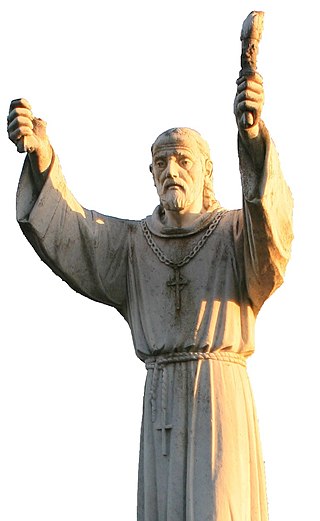
Finnian of Clonard – also Finian, Fionán or Fionnán in Irish; or Finianus and Finanus in its Latinised form (470–549) – was one of the early Irish monastic saints, who founded Clonard Abbey in modern-day County Meath. The Twelve Apostles of Ireland studied under him. Finnian of Clonard is considered one of the fathers of Irish monasticism.
Anthony Perry, known as the "screeching general" was one of the most important leaders of the United Irish Wexford rebels during the 1798 rebellion.

Enfield or Innfield is a town in south County Meath, Ireland, situated between Kilcock and Kinnegad and very close to the border with County Kildare. The town is on the Dublin-Sligo railway line. It is located on the R148 regional road, formerly the N4 national primary road connecting Dublin to Connacht.
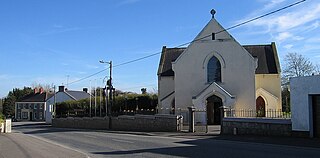
Raharney is a village in east County Westmeath, Ireland. It has a population of 221 according to the 2016 census.

Clonard Abbey was an early medieval monastery situated on the River Boyne in Clonard, County Meath, Ireland.

Drumconrath or Drumcondra is a small village in north County Meath, Ireland. The parish borders County Louth and is also close to the borders of Counties Monaghan and Cavan. As of the 2016 census, the village had a population of 345 people.
The Esker Riada is a system of eskers that stretch across the middle of Ireland, between Dublin and Galway.

Donore, historically Dunower, is a small village in County Meath, Ireland. It lies near Drogheda on the border between County Meath and County Louth, in the Boyne Valley on the road between Drogheda and the Brú na Bóinne heritage site. During the late 17th century, the village was used as a defensive position by the Jacobite army of King James II against King William III during the Battle of the Boyne (1690). The Battle of the Boyne Visitor Centre is located in the restored 18th century Oldbridge House, which is on the battle site, approximately 3 km north of Donore.

The Battle of Clonard occurred on 11 July 1798 near Leinster Bridge in the town of Clonard, County Meath, during the Irish Rising of that year. A combined force of between 2,000 and 4,000 United Irishmen engaged a force of 27 British loyalist militia troops led by Lieutenant Thomas Tyrrell over 6 hours in an attempt to cross the River Boyne. The defenders held the fortified house until they were reinforced by a Sergeant and 11 men of the Northumberland Fencibles and 15 men of the Kinnegad Cavalry under the command and including Lt Edward Haughton when the rebels were routed and retreated to Carbury. The attack on Clonard was a disastrous failure and a severe blow to the surviving rebels. Many of the Kildare rebels returned to their homes while many of the Meath men were dissuaded from joining the rebellion by the defeat and due to much of their existing stocks of ammunition being wasted in the battle.
